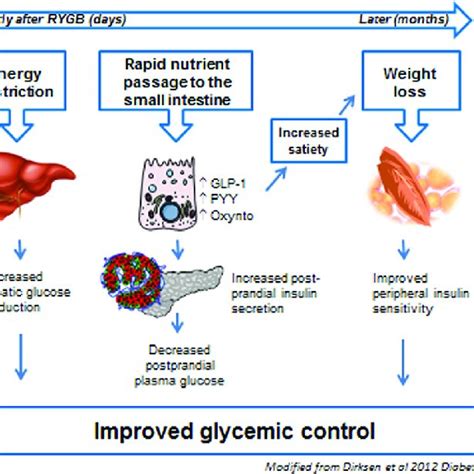Intro
Learn how to lose weight and prevent pre-diabetes through healthy diet, exercise, and lifestyle changes, reducing blood sugar levels and insulin resistance, promoting weight loss and overall well-being.
Preventing pre-diabetes is a crucial step in maintaining overall health and well-being. Pre-diabetes, also known as impaired glucose tolerance, is a condition where blood sugar levels are higher than normal but not high enough to be classified as diabetes. If left untreated, pre-diabetes can lead to type 2 diabetes, which increases the risk of heart disease, stroke, and other serious health problems. One of the most effective ways to prevent pre-diabetes is by losing weight, especially for individuals who are overweight or obese.
Losing weight can help improve insulin sensitivity, reduce blood sugar levels, and lower the risk of developing pre-diabetes and type 2 diabetes. Even a modest weight loss of 5-10% of initial body weight can have significant health benefits. For example, a study published in the Journal of the American Medical Association found that individuals who lost 5-10% of their initial body weight through lifestyle changes, such as diet and exercise, reduced their risk of developing type 2 diabetes by 58%.
The importance of weight loss in preventing pre-diabetes cannot be overstated. Excess weight, particularly around the abdominal area, is a major risk factor for pre-diabetes and type 2 diabetes. When we carry excess weight, our bodies become less responsive to insulin, making it harder for glucose to enter our cells. This can lead to high blood sugar levels, which can damage our blood vessels, nerves, and other organs over time. By losing weight, we can improve our insulin sensitivity, reduce our blood sugar levels, and lower our risk of developing pre-diabetes and type 2 diabetes.
Understanding Pre-Diabetes

Risk Factors for Pre-Diabetes
Several risk factors can increase a person's likelihood of developing pre-diabetes, including: * Age: People over 45 years old are more likely to develop pre-diabetes * Family history: Having a first-degree relative with diabetes increases the risk of developing pre-diabetes * Obesity: Carrying excess weight, particularly around the abdominal area, increases the risk of developing pre-diabetes * Physical inactivity: Leading a sedentary lifestyle can increase the risk of developing pre-diabetes * Ethnicity: Certain ethnic groups, such as African Americans, Hispanics, and American Indians, are more likely to develop pre-diabetes * Previous history of gestational diabetes: Women who have had gestational diabetes during pregnancy are more likely to develop pre-diabetes later in lifeBenefits of Weight Loss

Steps to Lose Weight
Losing weight can be challenging, but there are several steps that can help: 1. **Create a calorie deficit**: Reduce daily caloric intake to create a calorie deficit, which can help promote weight loss 2. **Eat a healthy diet**: Focus on whole, unprocessed foods, such as fruits, vegetables, whole grains, lean proteins, and healthy fats 3. **Incorporate physical activity**: Aim for at least 150 minutes of moderate-intensity aerobic exercise, or 75 minutes of vigorous-intensity aerobic exercise, or a combination of both, per week 4. **Stay hydrated**: Drink plenty of water throughout the day to help control hunger and boost metabolism 5. **Get enough sleep**: Aim for 7-9 hours of sleep per night to help regulate hunger hormones and support weight lossWorking Mechanisms of Weight Loss

Importance of Sustainable Weight Loss
Sustainable weight loss is crucial for maintaining overall health and well-being. Crash diets and quick fixes may lead to rapid weight loss, but they are often unsustainable and can lead to weight regain over time. Instead, focus on making sustainable lifestyle changes, such as eating a healthy diet and incorporating regular physical activity, to promote long-term weight loss and overall health.Practical Examples and Statistical Data

Statistical Data on Weight Loss and Pre-Diabetes
* According to the CDC, approximately 88 million adults in the United States have pre-diabetes, and 90% of them are unaware they have the condition * A study published in the Journal of the American Medical Association found that individuals who lost 5-10% of their initial body weight through lifestyle changes reduced their risk of developing type 2 diabetes by 58% * A study published in the International Journal of Obesity found that individuals who incorporated HIIT into their exercise routine lost more weight and improved their insulin sensitivity compared to those who performed steady-state cardioConclusion and Next Steps

We invite you to share your thoughts and experiences with weight loss and pre-diabetes prevention in the comments section below. If you found this article helpful, please share it with your friends and family to help spread awareness about the importance of weight loss and pre-diabetes prevention.
What is pre-diabetes, and how can it be prevented?
+Pre-diabetes is a condition where blood sugar levels are higher than normal but not high enough to be classified as diabetes. It can be prevented through weight loss, eating a healthy diet, incorporating physical activity, and staying hydrated.
How much weight loss is needed to reduce the risk of pre-diabetes?
+A modest weight loss of 5-10% of initial body weight can have significant health benefits and reduce the risk of developing pre-diabetes and type 2 diabetes.
What are some effective ways to lose weight and prevent pre-diabetes?
+Effective ways to lose weight and prevent pre-diabetes include creating a calorie deficit, eating a healthy diet, incorporating physical activity, staying hydrated, and getting enough sleep.
